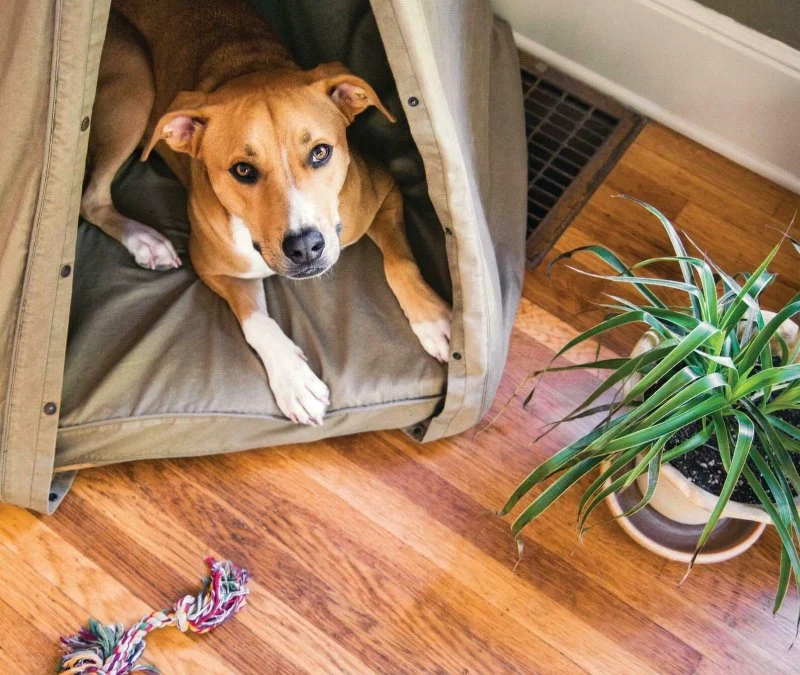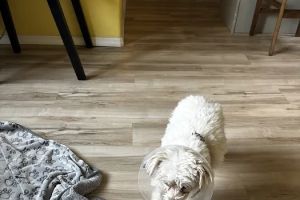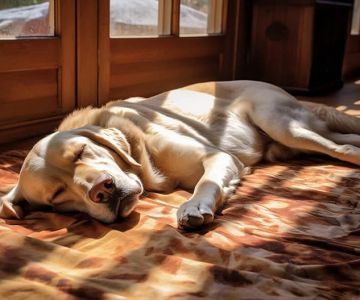
- Why Dogs Struggle with Being Alone
- Steps to Train Your Dog to Be Alone
- Creating a Positive Environment for Your Dog
- Common Mistakes to Avoid When Training
- Real-Life Examples and Tips
Why Dogs Struggle with Being Alone
Training your dog to be comfortable being alone at home can be a challenging task, but understanding why dogs struggle with separation anxiety is the first step toward a solution. Dogs are social animals, and they thrive on companionship. When left alone, they can experience stress, anxiety, and even destructive behavior.
Common signs of separation anxiety include barking, whining, chewing furniture, and even accidents inside the house. Understanding these behaviors will help you realize that your dog isn’t misbehaving but rather reacting to the stress of being separated from you. The key is to address this issue with patience and a structured approach, ensuring that both you and your dog are comfortable in the process.

Dr. Steven Sawdai
Mt. Pleasant Animal Hospital, 6120 Pleasant Ave, Fairfield, OH 45014, USA
Steps to Train Your Dog to Be Alone
Training your dog to be alone at home requires a step-by-step approach. The process will take time, so it’s essential to be consistent and gradual in your methods. Here are the key steps:
1. Start with Short Separations: Begin by leaving your dog alone for short periods of time. Initially, leave the house for just a few minutes and gradually increase the duration as your dog becomes more comfortable being alone. The goal is to teach your dog that you will always return.
2. Create a Safe Space: Designate a specific area in your home where your dog feels secure when you’re gone. This could be a crate, a playpen, or a room with familiar toys and bedding. A safe space helps to reduce anxiety and gives your dog a sense of control over their environment.
3. Use Positive Reinforcement: When your dog behaves calmly while you're away, reward them with praise or a treat. Positive reinforcement helps your dog associate your absence with good things, making them more likely to remain calm when you're not around.
4. Leave Comforting Items: Leave items with your scent, such as an old t-shirt or blanket, in your dog’s safe space. This can provide comfort and reassurance when you're away, helping them feel more at ease.

Pet Smiles General Veterinary Dentistry
50 E Guadalupe Rd, Gilbert, AZ 85234, USA
Creating a Positive Environment for Your Dog
Creating the right environment is crucial to training your dog to be alone. Here are some tips to ensure your dog feels safe and comfortable:
1. Exercise Before You Leave: Ensure that your dog has had a good amount of exercise before you leave them alone. A tired dog is less likely to engage in destructive behavior out of boredom. Take them on a walk or engage in a play session to help them burn off energy.
2. Use Interactive Toys: Provide your dog with puzzle toys or treat-dispensing toys that can keep them occupied while you're away. These toys not only entertain but also stimulate your dog’s mind, preventing them from focusing on your absence.
3. Maintain a Routine: Dogs are creatures of habit, and maintaining a consistent daily routine will help reduce anxiety. Try to leave and return home at the same time each day so your dog knows what to expect.
Common Mistakes to Avoid When Training
While training your dog to be alone, there are several mistakes that pet owners commonly make. Avoiding these will help your dog learn faster and more effectively:
1. Leaving for Too Long Too Soon: One of the biggest mistakes is leaving your dog alone for extended periods too early in the process. Start with short durations and gradually increase the time away to avoid overwhelming your dog.
2. Punishing Your Dog for Anxiety: Punishing your dog for behaviors like whining or barking will only increase their anxiety and make the problem worse. Instead, focus on positive reinforcement and redirecting their behavior.
3. Lack of Consistency: Consistency is key when training your dog. If you only practice leaving them alone occasionally, they won’t learn to feel comfortable in your absence. Make sure to stick to a regular routine to help reinforce your training efforts.
Real-Life Examples and Tips
Many dog owners have successfully trained their dogs to be alone with the right approach. For instance, one dog owner shared that their dog had severe separation anxiety, often barking for hours when left alone. By following a gradual desensitization process, starting with just a few minutes and increasing the duration, the dog eventually learned to be calm during extended absences. Another owner found that using a crate with a blanket that smelled like them helped their dog feel secure when left alone.
At Pet & Puppy, we offer various products to make this training process easier, including interactive toys, calming aids, and comfortable crates. Whether you're looking for a high-quality crate or a treat-dispensing puzzle toy, we have the tools to help your dog thrive when left alone.







 1214 Central Store0.0 (0 reviews)
1214 Central Store0.0 (0 reviews) Burlington Pet Hospital4.0 (118 reviews)
Burlington Pet Hospital4.0 (118 reviews) ArkVets4.0 (426 reviews)
ArkVets4.0 (426 reviews) Hartzell Veterinary Service: Charles W. Hartzell, DVM and Sue Ann Hartzell, DVM4.0 (105 reviews)
Hartzell Veterinary Service: Charles W. Hartzell, DVM and Sue Ann Hartzell, DVM4.0 (105 reviews) Noah's Ark Animal Hospital4.0 (163 reviews)
Noah's Ark Animal Hospital4.0 (163 reviews) Jasper Pet Clinic4.0 (285 reviews)
Jasper Pet Clinic4.0 (285 reviews) Transitioning Training Methods as Pet Ages: Adapting Techniques for Senior Pets
Transitioning Training Methods as Pet Ages: Adapting Techniques for Senior Pets How to Read & Understand Pet Nutrition Labels for Your Pet's Health
How to Read & Understand Pet Nutrition Labels for Your Pet's Health How to Choose the Right Pet Supplement Brand: Essential Tips for Pet Owners
How to Choose the Right Pet Supplement Brand: Essential Tips for Pet Owners How Much Should You Feed Your Pet? Portion Guide by Age & Breed
How Much Should You Feed Your Pet? Portion Guide by Age & Breed How to Create a Pet Health Journal: Metrics to Track for Better Pet Care
How to Create a Pet Health Journal: Metrics to Track for Better Pet Care What Breed-Specific Health Issues You Should Be Aware Of
What Breed-Specific Health Issues You Should Be Aware Of